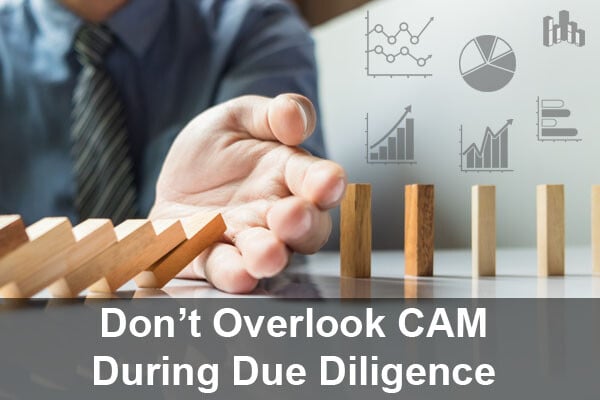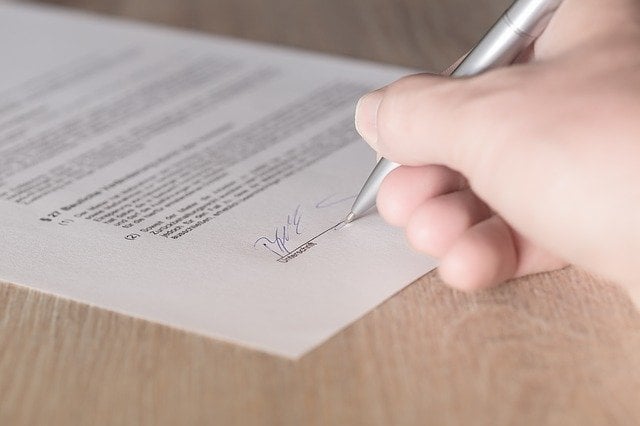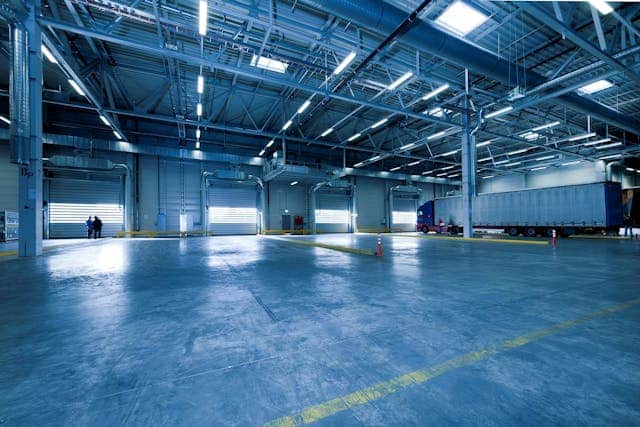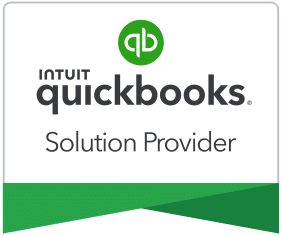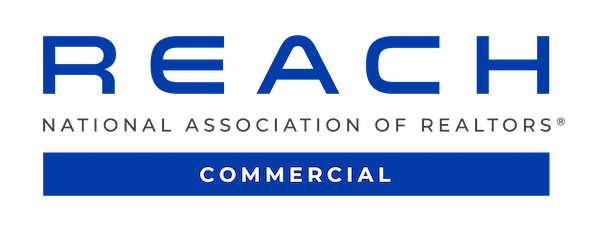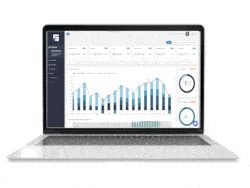Once you have identified a commercial real estate asset to purchase, the common area maintenance due diligence period begins. Verification begins with everything, including taxes, insurance, and a very important part of this process, common area maintenance (CAM). During the due diligence period, you have a set amount of time to complete any investigations planned. Use this time wisely and leave no stone unturned. You want to confirm all the numbers really make sense, and your investment is a profitable one.
Expenses included in common area maintenance, in particular, need scrutiny. Any number of issues or concerns could be lurking there and could dramatically alter your expected net operating income (NOI). It is also better to ask questions when you have a seller who is motivated to answer questions for you. After the sale, the motivation will not be there. So, ask the questions, learn the nuances, and get the history. Do your due diligence.
What are Common Area Maintenance Fees?
A net lease in a commercial space typically includes both rent (charged based on the square footage of the space) and common area maintenance fees. CAM fees are expenses where all the tenants of a property jointly share the benefits of specific services. Tenants pay CAM on a regularly scheduled basis, generally monthly. This fee includes a wide variety of expenses, including real estate taxes, insurance, repairs, property maintenance, and management expenses, to name a few.
Every lease includes the details around CAM. It is important to note that as much as every owner wants each lease to be the same, they are not. During the lease signing, the negotiation process often results in owner concessions, tenant agreements, and corporate policy making its way into the lease. The devil really is in the details here. You need to understand what all the expenses are and how they are accounted for.
Typical Common Area Maintenance Expenses
| Electricity | Elevator Maintenance |
| Insurance | Irrigation |
| Janitorial | Landscaping |
| Natural Gas | Property Management |
| Real Estate Property Taxes | Security |
| Snow Removal | Trash Removal & Recycling |
| Water & Sewer | Window Cleaning |
What to Ask For Associated with Taxes, Insurance, and Common Area Maintenance
Begin your investigation with the following requests to the seller:
- Property related:
- Contracts with service providers
- Warranties for any equipment (elevators, roof, or Heating, Ventilation, and Air Conditioning (HVAC), etc.)
- History of property repairs
- Tenant-related:
- Copies of all leases, amendments, modifications
- Tenant lease files
- Tenant credit report and payment history
- List of security deposits
- Common area maintenance (CAM) reconciliation for the previous 2 yearshttps://stratafolio.com/the-importance-of-a-clean-accurate-rent-roll/
- Rent rolls for the previous 2 years
- Aging report on CAM
- Budget-related:
- Current year operating budget
- Budget and actual operating budget for the previous 2 years
- Tax-related:
- Tax returns for the previous 3 years
- Insurance-related:
- Insurance Policy
- Information on past claims
What to Look for in the Property Related Materials
Warranties are provided on some big improvements such as a roof, elevator, or other equipment. Vendors often warranty their work, and if they do, you want to make sure that the warranty is transferable.
You will also want to review all contracts currently in place with any businesses providing services. This includes businesses that provide snow removal, lawn maintenance, pond maintenance, etc. With these contracts, you want to understand what has been agreed to in their contracts and their previous performance history in the event you want to maintain these contracts.
Finally, a complete history of all building repairs (roof, concrete work, HVAC, etc.) should be provided. Specifically, you want a report of the exact repairs or replacements, the repairs or replacement timeline, and the service provider. This information will help you understand the building’s state and what expenses you might want to project in the future.
Utilities, Property Management and Common Area Maintenance (CAM)
In terms of utilities, contact the local utility companies directly and request the previous two years’ worth of utility expenses. With these, look for trends in usage to see if this aligns with the current budget. But, if the expenses seem inordinately high for a building of its size and age, it could be an indicator that there is a larger issue at play that needs to be addressed.
In the event, there are property water features, such as a pond, understand if the owner has any financial stake in the monthly expenses. Sometimes all the expenses flow through to the tenants, but other times, the owner has some responsibility.
Understand what has been agreed to around property management fees. Owners often charge tenants property management fees to cover basic overhead fees.
“It’s important to be able to account for all expenses included in CAM and understand what property owners can and cannot pass through to the tenants,” says Craig Byers, a commercial realtor with Pivot Real Estate.
What to Look for in the Tenant Related Materials
There is a lot to understand about the tenants that are already in place. Start with the lease to understand what has been agreed to between the current owner and tenant. Make sure those agreements align with rent and CAM payments. Work with the seller to resolve all discrepancies before your ownership. Occasionally a tenant prepays their common area maintenance fees, and if that has occurred, you will want to make sure you receive credit for that.
Within the leases, look for any place where caps have been put in place. When a cap has been established, and the expense category goes over that threshold, you must cover the difference as the owner. In a triple-net lease, the expectation is that all costs flow through to the tenant. However, in a cap scenario, that is not the case. As the owner, you will cover the difference in a cap scenario. Review carefully to ensure all the agreements are properly accounted for in the pro forma. Your goal is to have an accurate picture of what the tenant is paying for and what the owner is paying for, so your view of NOI is as clear as possible.
“It is the responsibility of the owner to regulate CAM expenses and keep them as efficient and reasonably priced as possible to attract quality tenants,” Byers said.
By understanding each tenant in-depth, including their payment history, you will have a much clearer picture of how sound the income really is on the pro forma you are evaluating. If a tenant is routinely late on their rent, this could impact your cash flow. This could also indicate a poor financial picture for your tenant and hence impact your income.
What to Look for in the Budget Related Materials for Due Diligence
Each year, most organizations prepare an operating budget for the following year. Also, request both the previous year’s budget versus actual operating budgets plus current and future. Budgets provide insight into the types of expenditures that are planned for the upcoming year. This is helpful because it provides additional clarity on potential issues, necessary replacements, etc.
What to Look for from a Tax Perspective
The largest expense you will have in CAM is real estate taxes, making it a critical piece of your due diligence process. Confirm you have the latest tax assessment and make sure it is current. Because commercial assets are reassessed every 1-3 years, depending on the state, know where the asset is in the cycle. Understand where the next increase is likely to occur. If the current tax assessment is out of line, the current owner should take on the responsibility of appealing the property tax.
Additionally, look at the three previous year’s taxes on the property. Look at the tax returns as compared to the financial information the seller provides. Alert the seller of any discrepancies.
What to Look for from an Insurance Perspective
From the owner, request a current copy of the insurance policy and a claim history on the property. If there has been a recent claim that could indicate an upcoming rate increase, thereby increasing expenses. Sometimes the claim history is a conversation with the current owner to understand what has transpired over the course of their ownership. This sheds light on any additional risk you might be undertaking.
In Closing
Unfortunately, not all owners keep the best records, which make due diligence investigations difficult and time-consuming. Ask the seller all questions you have. Red flags include evasive responses or uncooperativeness. During due diligence, your job is to determine if the lack of answers is due to poor record-keeping or something else. Finally, throughout this process, your realtor should be a trusted advisor and help you understand where things seem out of line. In fact, they are in the business every day and have a wealth of knowledge to pull from. Don’t hesitate to ask for their help as you complete your due diligence work.
